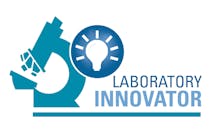The use of middleware in laboratories to consolidate connections with the LIS and provide rerun and reflex rules with IVD automation systems is an established model of analyzer control and will continue to grow as analyzer automation and enterprise systems become larger and more complex. The use of middleware is expanding to provide more than just simple sample processing and rerun/reflex rules. It includes rules that address processing based on diagnosis codes, patient-specific rules, specimen aging, and extended delta rules that focus on previous data such as analyzer flags, operator alerts, and critical comments.
However, the debate continues whether rules and auto-verification with rules should be done by the LIS or closer to the analyzer using middleware.
The question is not “What is the best rule?” Rather it is, “What is the best strategy to use to determine the rule sets to achieve the goal of optimum turnaround time and accurate result reporting?” Middleware provides new capabilities at a low incremental cost, especially when spread across a multi-site or IHN environment. It also has the added advantage of matching the specific capabilities of the analyzers and medical devices that it manages. Consider the following advantages that middleware can provide when you make decisions on how to improve or implement an auto-verification program.
Reduced analyzer connection costs. A middleware product can eliminate the cost of point-to-point interfaces by focusing on one interface to the LIS to reduce cost of testing and ongoing maintenance. The control of the analyzer is simplified with one LIS configuration to the middleware that can more efficiently handle the analyzer features and functions with a specific setup that is tailored to the vendor’s analyzers and medical devices.
Real-time data checking. Middleware has the advantage of sending the rerun and reflex instructions back to the analyzers and connected medical devices faster than routing the data back to the LIS to make decisions and resend these decisions back to the analyzer or automation system. This near real-time data management optimizes the automation system processing with minimal tech intervention, but also ensures that the orders and result/sample handling instructions are present before the sample arrives at the next processing point. The extra step of transmitting data back to the LIS for processing decisions is eliminated, which guarantees that the sample is not compromised by a delay in operating instructions.
Centralized local rule control. Middleware moves the control of rules from the IT/LIS departments directly to the laboratory to implement rule changes faster. Local control of rules with middleware provides the ability to adapt faster and make meaningful changes to optimize rule sets without the need to involve the LIS or IT departments. The entire organization can benefit from local control of rules in the hands of those who have discipline-specific expertise so they respond to changing conditions more quickly.
Business intelligence tools. Many middleware products provide management tools that are specifically designed to monitor data such as manual to auto-validation rates, rule statistics by analyzer/site/user, smear rates, and cross-comparison of flagging to analyzer and manual differential results. The use of discrete monitoring and reporting tools down to the test, analyzer level, and even comment level can provide the laboratory the benefit of reading and acting on alerts more rapidly and frequently. On-demand data analysis with analyzer-specific management report tools can aid in faster and more accurate decision making.
So, when making a decision about whether the rules are better on the LIS or the middleware—consider the other benefits of middleware that move beyond just the idea of whose rules are better. Take a strategic approach when evaluating the model of analyzer control so that all benefits are evaluated. Middleware has the potential of elevating your laboratory to a higher level of rule, result, sample, and device control to enhance laboratory productivity and resulting turnaround time.
Anne Tate is Senior Product Manager for Illinois-based Sysmex America, Inc., provider of laboratory equipment and information management systems.





